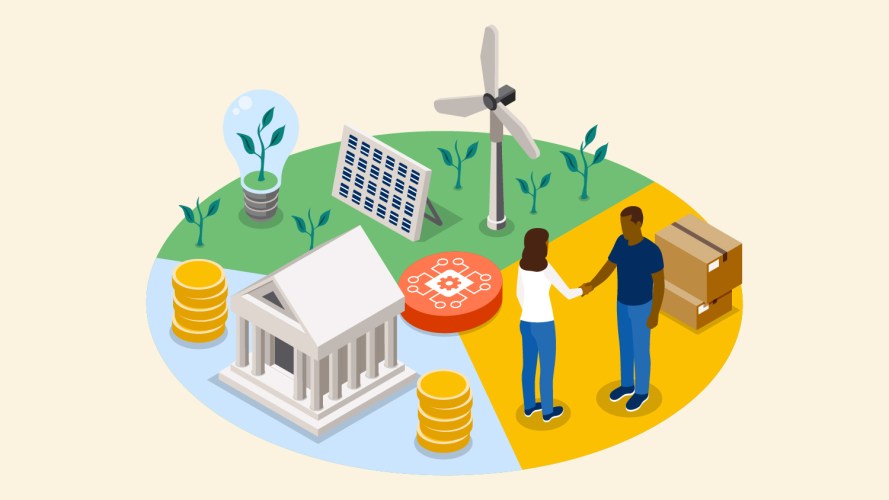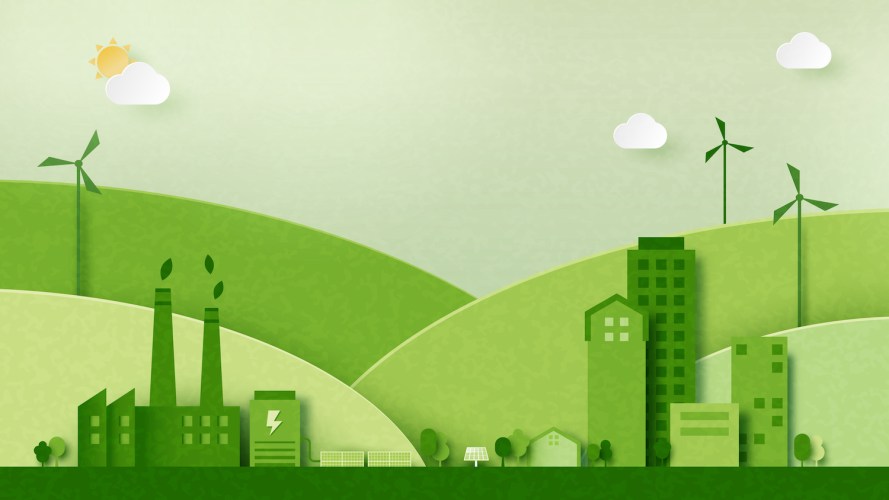6 Ways Small Businesses Can Fight Climate Change



Every business can get involved in fighting climate changes — including small- and medium-sized businesses. Here are six ways to take action.

Amalia Miller Murray
The annual World Economic Forum at Davos is nearly here, and one topic that’s sure to get a lot of attention this year is the environment. While sustainability has been in the conversation for some time, it’s catapulted to the forefront thanks to (among other things) the U.S. government’s report detailing the dire and devastating effects of climate change.
Many individuals have made fighting climate change a personal tenet, but to make a lasting impact, we at Salesforce believe everyone should get involved — from companies and organizations to governments and nonprofits. And that definitely includes small businesses, which account for 99.7% of employer firms in the United States.
So in the spirit of Davos, which seeks to improve the state of the world, here are six ways small businesses everywhere can take action on climate change.
1. Build a culture of awareness
It’s important to educate employees on the impacts every person makes on the environment. There are simple steps we can all take to reduce our ecological footprints, and if you make sustainability part of your culture, it will become the norm, both in and out of the office. A great place to start is assembling a group of environmental advocates to form a sustainability team within your organization (Here are 5 quick tips from Salesforce’s own employee green team, Earthforce). Learn more ways that you can make a positive impact and combat the effects of climate change by earning your Strategies for Positive Impact badge on Trailhead.
2. Rethink your waste
Trash and byproducts have become a major problem in today’s culture. It’s virtually impossible to eliminate all waste, but think about ways you can cut down: eliminate paper handouts, cut back on the office soda habit, and avoid too many take-out containers. It’s easy to skip the bottled water at every meeting, and you might even consider a company-wide ban on single-use water bottles. Waste reduction also makes good business sense as it reduces the costs associated with both purchasing and waste disposal. While you’re cutting back, keep in mind that recycling is a simple way to make a big impact — and it’s amazing what companies can do to give new life to old products.
3. Reduce your travel
Travel, especially air travel, wreaks havoc on the environment. Video conferencing technology has improved substantially over the past few years, making it easier than ever to connect with coworkers around the globe. So the next time a travel opportunity arises, ask yourself whether the trip is really necessary or if you could conduct your business virtually. Reducing the number of cars on the road also cuts back on gas and emissions; try subsidizing a bus pass or public transportation card. If that’s not possible, allow remote work or offer incentives for employees who carpool. Even something as simple as installing an office bike rack is a step in the right direction.
4. Choose environmentally conscious vendors
As the saying goes, it takes a village. If your small business wants to fight climate change, find other businesses and organizations that do, too. Take a look at your supply chain. Who are your providers and do your values align? Using local vendors for catering and supplies not only supports your local economy and other small businesses, it also cuts back on shipping, gas, manufacturing, and logistics. Eating seasonal items also helps to avoid less sustainable production methods.
5. Save energy
How many of your computers and appliances remain on when no one’s around? Careful use of technology and appliances not only saves energy, it’ll also save you some coin when your monthly bills arrive. You may also consider installing smart thermostats, which allow you to set your thermostat remotely and create temperature schedules for various times in the day. Finally, LED light bulbs consume at least 75% less energy than traditional incandescents. No need to change out your fixtures — a simple light bulb swap is all it takes to make the switch.
6. Use the cloud
Cloud computing has become the norm for companies today, which is fantastic since a cloud infrastructure addresses two critical elements of a green IT approach: energy efficiency and resource efficiency. Running your small business with cloud technology — like Salesforce Essentials — not only saves space and provides flexibility, it also cuts back on hardware and manufacturing, plus the emissions that go along with both. (FYI Salesforce delivers all customers a carbon neutral cloud. In addition to avoiding and reducing our emissions, we offset emissions within our data center supply chain, such as the manufacturing of servers, production, and distribution of energy used at our data centers, and the impact of our customers using Salesforce on their personal devices.)
Some of these ideas may seem overwhelming for small businesses, many of whom are strapped for cash and resources. But environmentally-sound business practices don’t have to break the bank — and some can even save you a dime. To get started at your own organization, read up on why green teams matter, then learn more about how Salesforce Essentials helps you grow your business responsibly.
Salesforce Essentials helps you find more customers, win their business, and keep them happy so you can grow faster than ever. Learn more about our small business CRM solutions.























